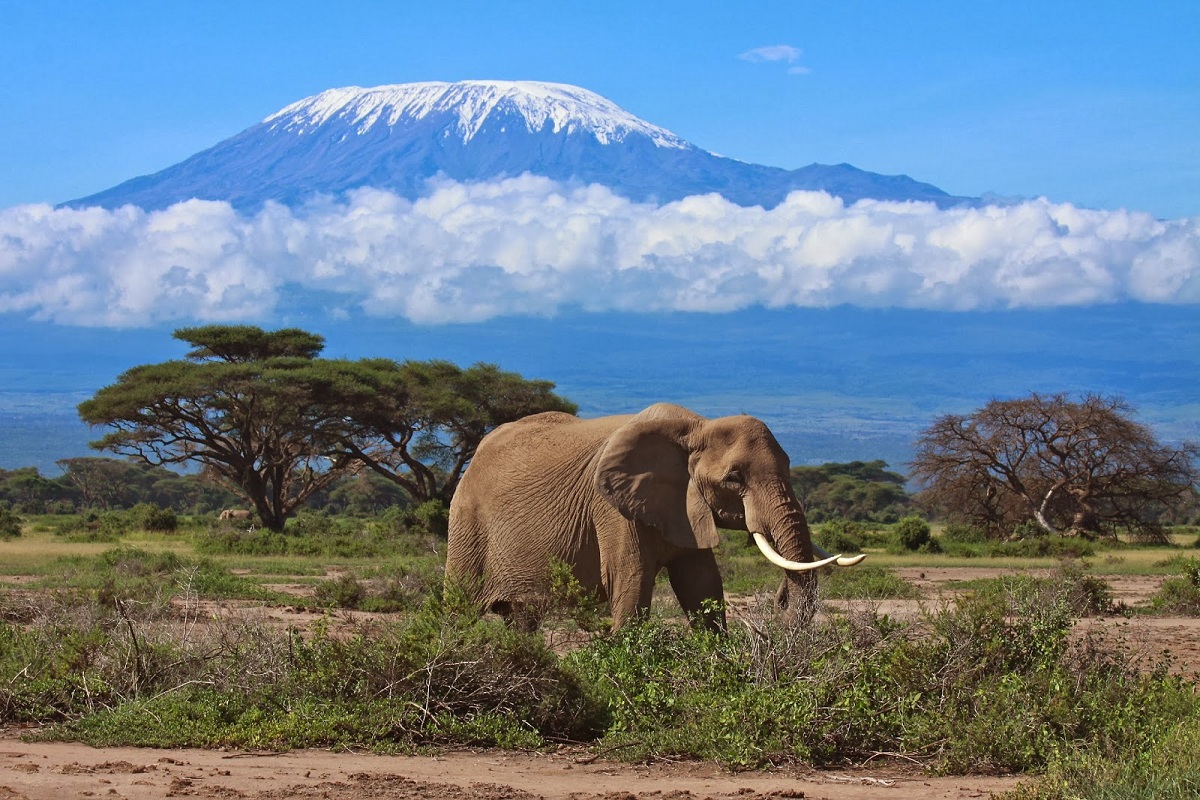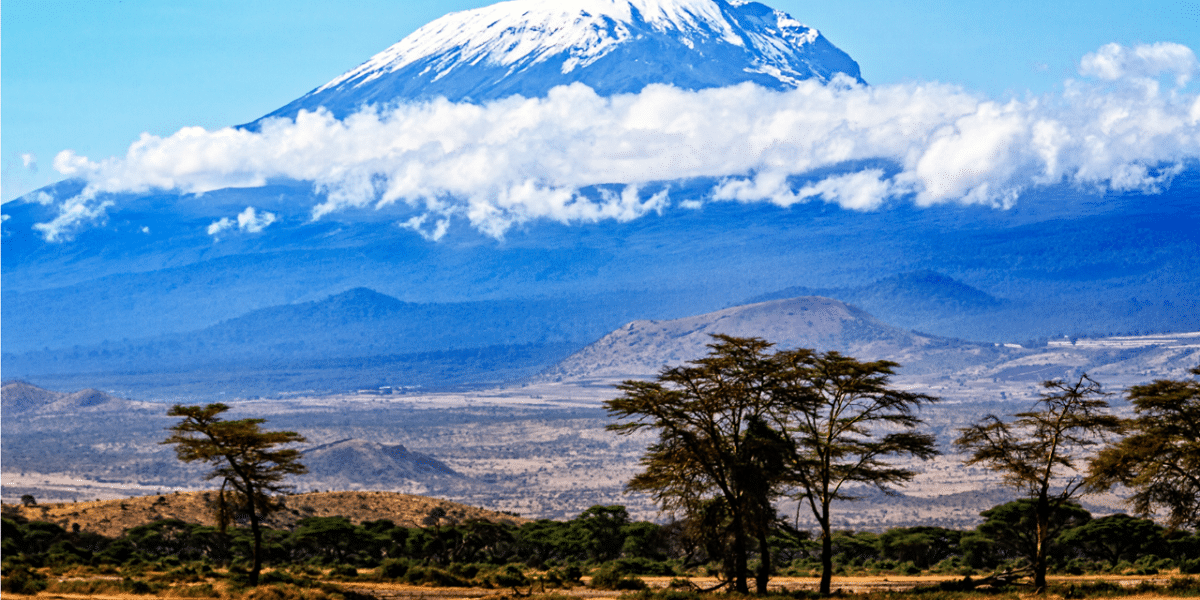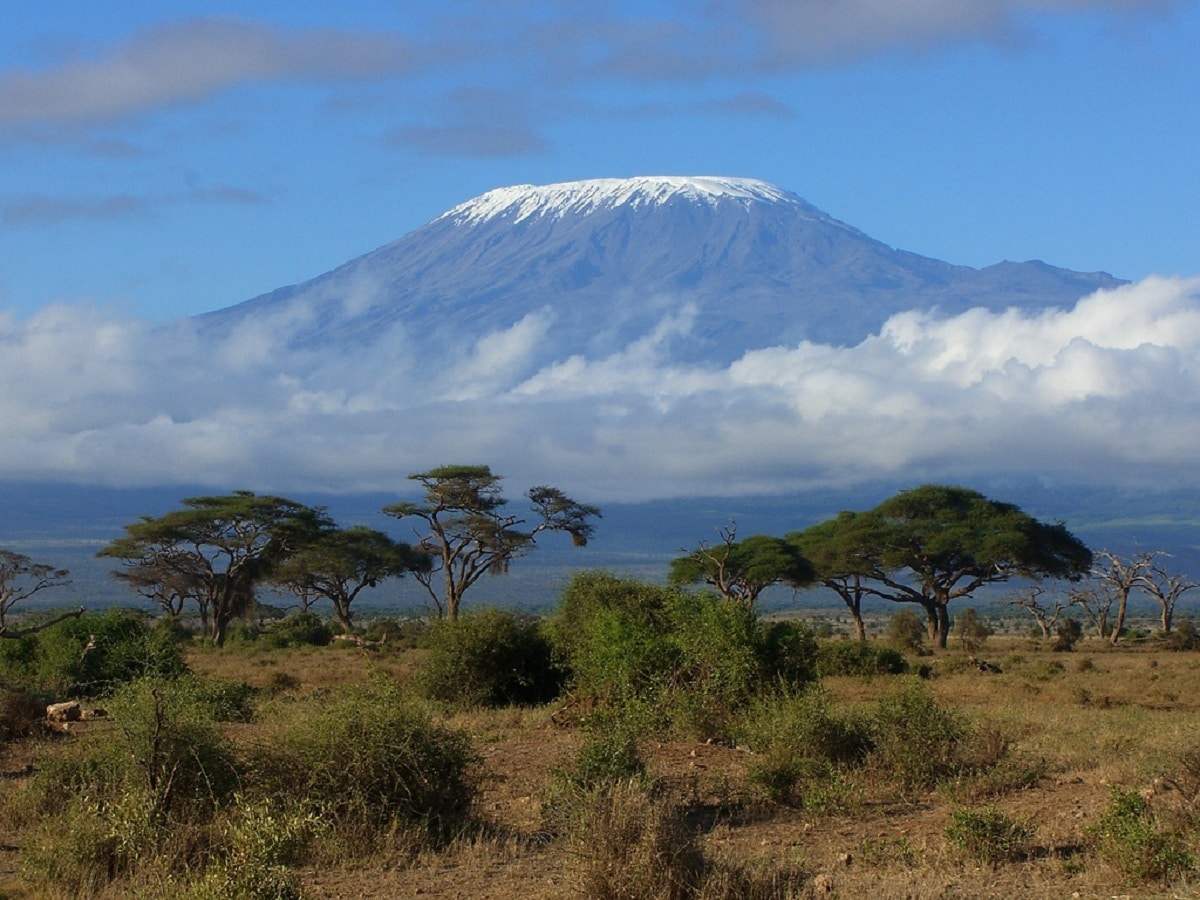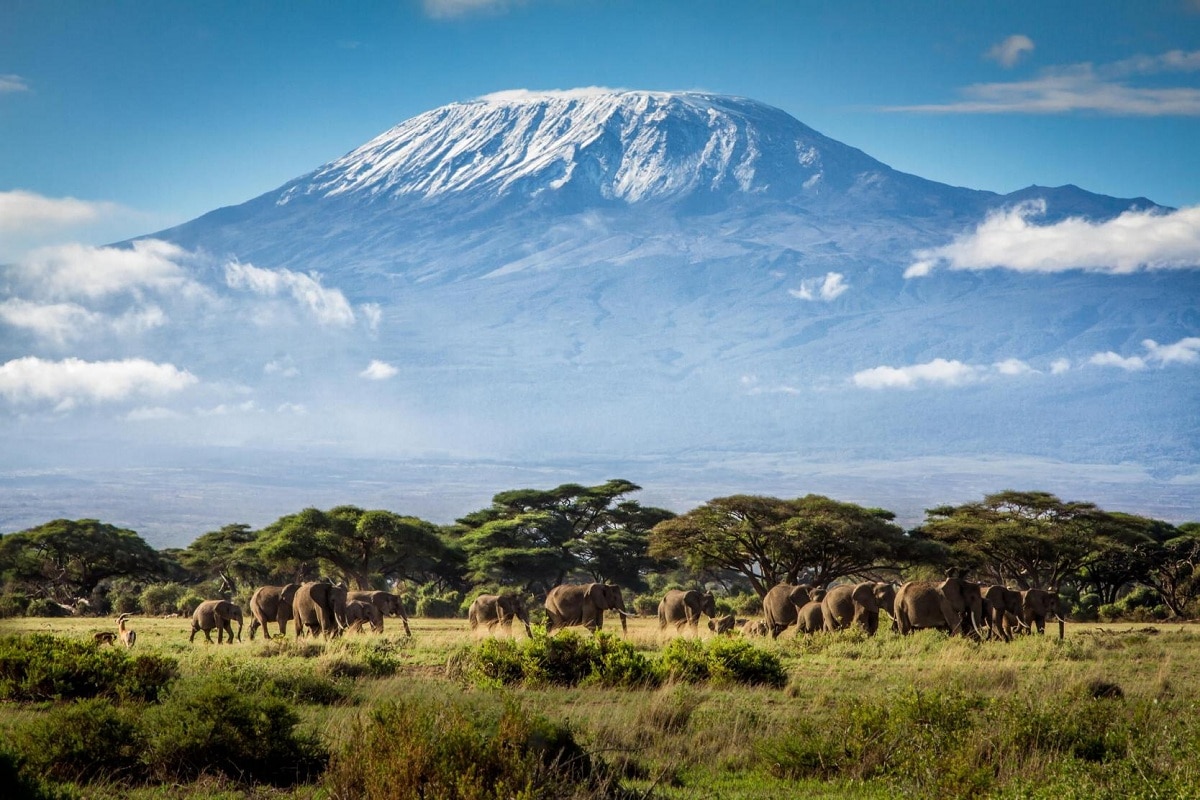
One of the best known mountains in all popular culture is the Kilimanjaro. It is a triple volcano that is made up of 3 with volcanic ones. Each is considered a peak and are known by the names of Kibo, Mawenzi, and Shira. Of these three peaks, Kibo is the highest of all. It is located in Africa and is the highest mountain in the entire continent with a height of 5.895 meters above sea level. It is known as the highest independent mountain in the world.
In this article we are going to tell you about all the characteristics, formation and eruptions of Kilimanjaro.
Key features

Throughout history it has been debated by geologists and volcanologists whether Kilimanjaro is an extinct or dormant volcano. It has been categorized as a dormant. It could be translated as dormant and means a type of volcano that has not erupted for a very long time. However, it could do so at any time. That means a sleeping volcano. It means that, although it has not erupted, it can do so at any time. It is not extinct.
An inactive volcano can continue to hear gases or erupt. In contrast, an extinct volcano no longer has enough magma to be able to eject. In the case of Kilimanjaro we find the Mawenzi and Shira cones as two extinct peaks. This is because it no longer has enough magma to be able to expel the eruption. However, Kilimanjaro as a whole still se considered inactive as the Kibo peak is still exhaling gas.
The entire Kilimanjaro is made up of a stratovolcano or composite volcano. This is a type of volcano formed through the accumulation of various flows of materials that were solidifying. These materials are mainly ash and pumice stone. Kibo Peak is the central horn and the only active one so far. Geographically we locate it in Tanzania, located about 330 kilometers south of the Equator and near the border with Kenya. This mountain rises above a plain and one of its slopes is covered by forests that make a nice contrast to all the grasslands of the surrounding plains.
Since Kilimanjaro has a height of more than 5.000 meters, during the winter season it is usually with snowy peaks. It is here that one of the most beautiful landscapes in the entire world is offered. And we can see snow and savanna in the same place. This mountain also has one of the ice sheets on top with a huge mass, but it is shrinking due to climate change. Kilimanjaro has lost about 80% of its entire ice mass since 1912.
Kilimanjaro formation

This mountain is located along a boundary of a divergent-type tectonic plate. This type of tectonic plate is one that separates of interest and is capable of allowing magma to arise from deeper regions. Hence the formation of the volcano. Specifically Kilimanjaro are found on the East African rift. This area is known as a fracture where the African tectonic plate gradually separates into two different plates. It is quite known worldwide thanks to the fact that it was formed in a geologically active boundary. Here at these limits the magma moves through the entire Earth's mantle until it rises to the surface.
The formation of Kilimanjaro took place less than 1 million years ago. All this growth ceased approximately 300.000 years ago. It all started with the eruption and its activity of Shira approximately 2.5 million years ago. During the Pliocene all volcanic activity took place and ended 1.9 million years ago. It is already when approximately 1 million years ago the Kibo and Mawenzi peaks began to launch materials from the interior of the earth.
Most of all the development of Kilimanjaro have taken place during the Pleistocene. The climate of this time could be determined using some methods such as the study of the levels of the lakes, the flow of the rivers, the dune systems, the extent of the glaciers and the study of pollen. From quaternary There have been 21 major ice ages that have been felt even in East Africa. Traces of the cooling of the climate throughout this area can be found on Kilimanjaro.
The climate indicates that all the trunks of the ecosystems were isolated and of the alpine type with identical flora and fauna. It means that the ecosystem has been broader and low in height at the beginning. Later, with the development of the peaks, the entire environment was modified and the species had to adapt.
Eruptions

Although we have already mentioned that the Kibo is the only one capable of being able to erupt, it will surely give one day. The eruptive activity that takes place on Kilimanjaro It could be observed 2.5 million years ago from the Shira cone. As mentioned above, there is currently no known historical eruption of this volcano. The activity has been very reduced, only some fumaroles that escape from the Kibo crater. As a consequence of these fumaroles, some landslides and landslides have taken place but without much importance.
The last eruption of the volcano may have taken place approximately 100.000 years ago. The last major volcanic activity has been recorded for about 200 years. Although Shira and Mawenzi have become completely extinct, scientists study this volcano and do not rule out the possibility that Kibo could one day make an eruption. However, it is not a volcano with any kind of danger, so you can perfectly enjoy all the landscapes it offers. Only here can we observe the contrast between snow and savanna.
I hope that with this information you can learn more about Mount Kilimanjaro and all its characteristics.